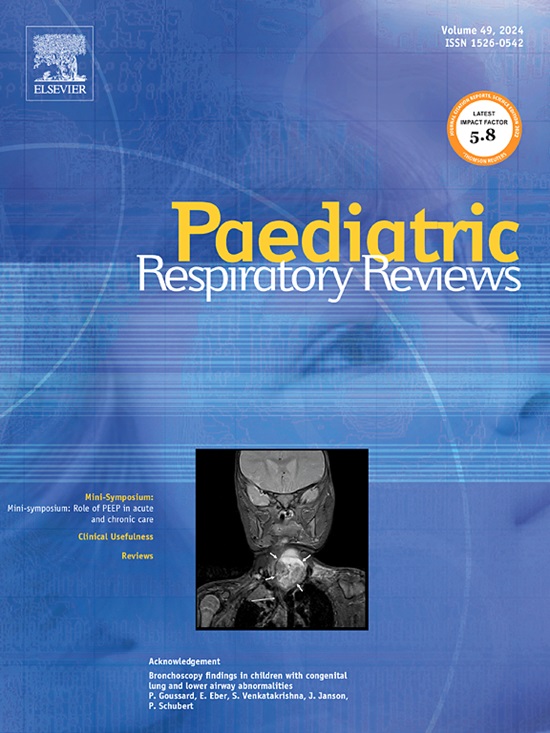高流量鼻导管(HFNC)疗法与标准氧疗(SOT)和持续气道正压(CPAP)对支气管炎的疗效比较
IF 4
3区 医学
Q1 PEDIATRICS
引用次数: 0
摘要
高流量鼻插管治疗(HFNC)是毛细支气管炎呼吸支持的一种形式。最近的证据证实,与标准氧疗(SOT)相比,HFNC可将治疗升级的风险降低近一半(45%),尽管大多数轻中度呼吸窘迫患者(75%)接受SOT治疗效果良好。大多数SOT失败的儿童(60%)对HFNC反应良好,与一线使用相比,使用HFNC抢救是一种更具成本效益的方法。HFNC与CPAP在中重度毛细支气管炎患者中的比较。HFNC患者治疗失败的风险略有升高,特别是在严重的毛细支气管炎中,但这并没有转化为患者或医疗保健中心结果的显着差异。HFNC耐受性提高,并发症发生率低,在周边医院更容易获得。因此,首选的一线方案是随后进行CPAP抢救。HFNC临床有效,安全用于所有严重的毛细支气管炎。本文章由计算机程序翻译,如有差异,请以英文原文为准。
Effectiveness of high flow nasal Cannula (HFNC) therapy compared to standard oxygen therapy (SOT) and continuous positive airway pressure (CPAP) in bronchiolitis
High Flow Nasal Cannula therapy (HFNC) is a form of respiratory support for bronchiolitis. Recent evidence confirms HFNC reduces the risk of treatment escalation by nearly half (45%) compared to standard oxygen therapy (SOT), although most patients (75%) with mild-moderate respiratory distress manage well on SOT. The majority of children (60%) failing SOT respond well to HFNC making rescue use of HFNC a more cost-effective approach compared to its first-line use. HFNC is compared to CPAP in the setting of moderate to severe bronchiolitis. Patients on HFNC have a slightly elevated risk of treatment failure especially in severe bronchiolitis, but this does not translate to a significant difference in patient or healthcare centred outcomes. HFNC has improved tolerance, a lower complication rate and is more easily available in peripheral hospitals. It is therefore the preferred first line option followed by rescue CPAP. HFNC is clinically effective and safe to use in bronchiolitis of all severities.
求助全文
通过发布文献求助,成功后即可免费获取论文全文。
去求助
来源期刊

Paediatric Respiratory Reviews
医学-呼吸系统
CiteScore
12.50
自引率
0.00%
发文量
40
审稿时长
23 days
期刊介绍:
Paediatric Respiratory Reviews offers authors the opportunity to submit their own editorials, educational reviews and short communications on topics relevant to paediatric respiratory medicine. These peer reviewed contributions will complement the commissioned reviews which will continue to form an integral part of the journal.
Subjects covered include:
• Epidemiology
• Immunology and cell biology
• Physiology
• Occupational disorders
• The role of allergens and pollutants
A particular emphasis is given to the recommendation of "best practice" for primary care physicians and paediatricians.
Paediatric Respiratory Reviews is aimed at general paediatricians but it should also be read by specialist paediatric physicians and nurses, respiratory physicians and general practitioners.
It is a journal for those who are busy and do not have time to read systematically through literature, but who need to stay up to date in the field of paediatric respiratory and sleep medicine.
 求助内容:
求助内容: 应助结果提醒方式:
应助结果提醒方式:


